Target Engineering: Structural Solutions for the MENA Region
Executive Summary: From Deterioration to Resilience
The durability of infrastructure is the cornerstone of economic stability and public safety. In the dynamic and rapidly evolving markets of the MENA region, concrete structures are increasingly vulnerable to a complex interplay of aging factors, environmental stresses, and unforeseen operational demands. This report argues that a proactive, scientifically-backed approach to structural repair and rehabilitation is not merely a reactive measure but an essential strategy to ensure the long-term resilience and value of critical assets.
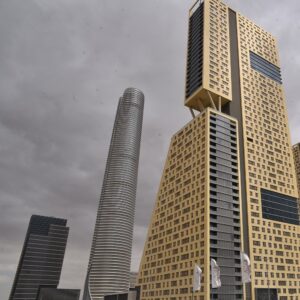
Traditional repair methods often fail to provide a lasting solution, leading to recurring problems and higher costs over the structure’s lifecycle. In contrast, modern, specialized engineering solutions—such as carbon fiber strengthening, high-performance shotcrete, and precision crack injection—offer a new paradigm for structural revival.
This analysis highlights Target Engineering Specialized Works as a leader in this niche sector. The company’s deep technical expertise, demonstrated by a strategic portfolio of certified applicator partnerships with global manufacturers, positions it as an indispensable partner in addressing the region’s unique infrastructure challenges. By delivering advanced, scientifically-verified solutions backed by a robust project portfolio, Target Engineering Specialized Works is not just fixing structures; it is helping to build a more durable and sustainable future for MENA.
Chapter 1: The Modern Context of Structural Deterioration in MENA
1.1 The Silent Epidemic of Aging Infrastructure
Concrete is the most widely used building material globally, renowned for its strength, durability, and versatility. Fundamentals of Concrete Deterioration. However, despite its robust nature, concrete infrastructure is not immune to degradation over time. Fundamentals of Concrete Deterioration. The inherent vulnerabilities of structures manifest as cracks, spalling, and a loss of material properties due to a variety of internal and external stresses. If left unaddressed, these issues can compromise the structural integrity of a building or bridge, significantly reducing its lifespan and creating potential safety hazards. Fundamentals of Concrete Deterioration and Nondestructive Evaluation of Concrete Structures.
The causes of structural deterioration are multifaceted and often compound one another. They can be traced to original design flaws, environmental assaults like chloride and sulfate ingress, stress from cyclical loads, seismic activity, and even unforeseen accidents. Fundamentals of Concrete Deterioration. A crucial aspect of effective rehabilitation is a comprehensive understanding of these root causes to ensure that any repair not only addresses the symptom but provides a lasting solution that prevents future recurrence.
1.2 Environmental and Urban Challenges: A Regional Analysis
A. The Egyptian Context: Climate-Induced Deterioration and Market Dynamics
The Egyptian environment presents a unique set of challenges to the longevity of infrastructure, particularly in its bustling coastal cities. Research indicates that thousands of buildings in Alexandria, for example, are at risk of collapse due to poor design or construction, exacerbated by factors such as rising sea levels and coastal erosion, which facilitate the ingress of saltwater into the groundwater table. This phenomenon leads to soil destabilization and, critically, accelerates the corrosion of rebar within building foundations. Sea-level Rise and Structural Collapse in Alexandria, Egypt. This process creates a self-perpetuating cycle of deterioration, as the very foundation of the structure is slowly compromised from below. The evidence is tangible, with hundreds of buildings having already collapsed in Alexandria over the past two decades. Sea-level Rise and Structural Collapse in Alexandria, Egypt.
These environmental threats are compounded by specific market dynamics. While Egypt’s construction sector is experiencing renewed momentum and economic stability, it still faces a fundamental market hurdle: a widespread resistance to modern, high-quality building practices. Overview of the Egyptian Construction Market and The Advantages of Ready-Mix Concrete. A significant portion of the building community still prefers site-mixed concrete (SMC) over ready-mix concrete (RMC), despite the latter’s documented advantages in quality control, speed, and reduced material waste. The Advantages of Ready-Mix Concrete. This preference stems from a focus on low unit prices rather than a holistic cost-benefit analysis of long-term value and durability. This market behavior highlights a pressing need for education and trust-building. For a company to succeed in this environment, it must not only possess the technical expertise to address climate-induced deterioration but also be able to demonstrate the long-term economic and safety benefits of its specialized solutions to overcome entrenched market traditions. A contractor who can act as both a technical expert and a trusted advisor is uniquely positioned to lead a necessary shift in construction quality and safety.
B. The Moroccan Context: Navigating Regulations and Project Needs
Morocco is another key market for specialized engineering work. Target Engineering Specialized Works. While the country has building regulations in place, their on-the-ground effectiveness is highly dependent on strong compliance and enforcement. Moroccan Building Regulations and Application of Standards in Moroccan Construction Projects. This regulatory environment places a high value on contractors who can not only perform the required work but can also provide a level of quality assurance that is recognized and certified by third parties. In such a market, a company’s ability to demonstrate its commitment to international standards and its technical competence becomes a critical differentiator. This is precisely where a firm with certifications from global industry leaders can gain a decisive edge, providing clients with a guarantee of quality and technical proficiency that goes beyond generic local requirements.
Chapter 2: Pioneering Engineering Solutions for Structural Revival
2.1 The New Arsenal of Rehabilitation: Beyond Traditional Methods
The field of structural repair and rehabilitation has evolved significantly, moving beyond basic patching and surface-level fixes to embrace advanced, non-traditional methods that restore and even enhance a structure’s original capabilities. These innovative techniques use modern materials and precise application procedures to deliver durable, long-lasting results. Three of the most prominent and effective methodologies are composite strengthening, shotcrete, and targeted injection techniques.
2.2 The Power of Composite Strengthening: Carbon Fiber Systems
Carbon Fiber Reinforced Polymers (CFRP) represent a monumental leap forward in the rehabilitation of concrete structures. This material, often applied as a fabric or laminate, offers an exceptional combination of properties that make it a “breakthrough strengthening material.” Strengthening Structures with CFRP. Its tensile strength is 7-10 times that of steel for the same cross-sectional area. Strengthening Structures with CFRP.
The application of CFRP is particularly advantageous due to its high strength-to-weight ratio. This allows for the addition of significant load-bearing capacity and stiffness to a structure without increasing its weight or volume. Strengthening Structures with CFRP. Furthermore, CFRP exhibits excellent resistance to corrosion and aging, making it an ideal choice for environments where steel is susceptible to rust and deterioration, such as the coastal areas of Egypt. Sea-level Rise in Alexandria, Egypt and Strengthening Structures with CFRP. The material’s pliability allows for a simple and rapid construction process without the need for heavy machinery or wet operations. Critically, its conformability ensures a near-perfect 100% adhesion rate on irregular surfaces, a feat difficult to replicate with traditional steel plates. Strengthening Structures with CFRP. This technique is widely used to improve the seismic resistance, ductility, and overall mechanical performance of beams, slabs, columns, and large-scale infrastructure like bridges and tunnels. Strengthening Structures with CFRP.
2.3 The Precision of Sprayed Concrete: The Shotcrete Advantage
Shotcrete is a modern and highly effective method of placing concrete or mortar by spraying it at high velocity onto a surface. Shotcrete: Method, Application, and Advantages. This technique is used as a structural material because it exhibits superior hardened properties compared to conventional cast-in-place concrete, including higher compressive strength, lower permeability, and enhanced durability. Shotcrete: Method, Application, and Advantages and Shotcrete in Infrastructure Rehabilitation.
The core advantages of shotcrete lie in its speed and versatility. It can accelerate a project schedule by 33% to 50% and reduces or eliminates the need for expensive and time-consuming formwork, saving anywhere from 50% to 100% on costs. Shotcrete: Method, Application, and Advantages. This makes it a cost-effective solution for complex shapes and for repair projects in hard-to-access locations. Shotcrete: Method, Application, and Advantages and Shotcrete in Infrastructure Rehabilitation. The process provides an excellent bond with the existing substrate, allowing it to restore structural integrity, protect against corrosion, and provide waterproofing. Shotcrete in Infrastructure Rehabilitation. Common applications of shotcrete include the rehabilitation of bridges and tunnels, structural walls, and storm drain channel repair. Shotcrete: Method, Application, and Advantages.
2.4 Targeted Injection for Structural Integrity: Epoxy and Polyurethane
Cracks in concrete are not just cosmetic flaws; they can compromise a structure’s integrity and allow water to penetrate, leading to further deterioration. Crack Repair: Epoxy and Polyurethane Injection. Crack injection is a specialized procedure that involves forcing a low-viscosity material into the fissures under pressure to seal them and restore the monolithic properties of the concrete. Crack Repair: Epoxy and Polyurethane Injection and Crack Injection Systems.
The success of this method is entirely dependent on selecting the correct material for the specific application. When a structural repair is needed to re-bond cracked sections and restore load-bearing capacity, epoxy is the material of choice. Crack Repair: Epoxy and Polyurethane Injection and Crack Injection Systems. Epoxy can be formulated with varying viscosities to penetrate even hairline cracks as small as 0.002 inches (0.05 mm). Crack Repair: Epoxy and Polyurethane Injection. For non-structural repairs, where the primary objective is to prevent moisture ingress, polyurethane injection is a more suitable option. Crack Repair: Epoxy and Polyurethane Injection and Crack Injection Systems. The application procedure is precise and requires careful surface preparation, the installation of entry ports, and a methodical injection process to ensure complete penetration of the material into the fissure. Pressurized Crack Injection Procedures.
Chapter 3: The Value of Target Engineering Specialized Works: The Certified Difference
3.1 A Legacy of Specialization: Differentiating the Target Engineering Specialized Works Image
In the construction and engineering sectors, brand clarity is paramount. Target Engineering Specialized Works has carved out its distinct identity by focusing on a specialized portfolio of services, including flooring, waterproofing, thermal insulation, and structural rehabilitation. About Us and Target Engineering: Repair & Rehabilitation Services. With a strategic presence in key regional markets—Egypt, Morocco, and the UAE—the company has positioned itself as a niche expert capable of delivering tailored engineering solutions. Target Engineering Specialized Works and Certified Applicators. This deep specialization and nearly two decades of experience in the region are key indicators of its reliability and commitment to a client-centric business model. Target Engineering Specialized Works.
3.2 The Cornerstone of Quality: The Certified Applicator Status
One of the strongest testaments to Target Engineering Specialized Works’ technical expertise is its status as a certified applicator for a variety of global industry leaders. Target Engineering Specialized Works and Certified Applicators. This certification is not merely a badge; it is a fundamental component of the company’s quality assurance protocol. It provides direct, tangible benefits to clients and ensures projects are executed to the highest standards.
- Quality Assurance: The certification guarantees that application methods and procedures align exactly with the precise standards set by the manufacturers, ensuring products perform as intended. Certified Applicators.
- Compliance: This status demonstrates adherence to international technical standards, such as those from the American Society for Testing and Materials (ASTM), the International Organization for Standardization (ISO), and the American Concrete Institute (ACI). Certified Applicators.
- Warranty Protection: For many high-performance materials, manufacturers require installation by a certified applicator to validate the product’s warranty. This provides clients with a crucial long-term financial and technical safeguard. Target Engineering Specialized Works and Certified Applicators.
- Technical Expertise: The rigorous certification process involves advanced training and technical education, equipping Target Engineering Specialized Works’ teams with unparalleled proficiency in handling the manufacturers’ specific materials and techniques. Certified Applicators.
Target Engineering Specialized Works’ network of certified partnerships is not just a list of names; it is a “strategic mosaic” that grants the company the flexibility to choose the optimal product for any given engineering challenge. Target Engineering Specialized Works.
Table: Target Engineering Specialized Works Certified Applicator Partnerships
| Certifying Body | Scope of Certification |
|---|---|
| Prokem | Waterproofing systems and bituminous membranes Prokem and Certified Applicators |
| TekInject | Injection works (polyurethane, epoxy) for structural repair and joint sealing Certified Applicators |
| Hemts | Specialized coatings and sealants for infrastructure protection and rehabilitation Hemts and Certified Applicators |
| Sika Egypt | Waterproofing systems, injection techniques, joint sealing, and Sika product application Sika Egypt and Certified Applicators |
| Krypton Chemical | Advanced waterproofing, chemical solutions, and polyurea/epoxy coating systems Krypton Chemical and Certified Applicators |
| FOSROC | Flooring and repair works using Fosroc products Certified Applicators |
| Mapei | Flooring systems, adhesives, waterproofing, and repair using Mapei products Mapei and Certified Applicators |
| Master Builders Solutions | Concrete admixtures, waterproofing systems, industrial flooring, and structural repair Master Builders Solutions and Certified Applicators |
| INSUTECH | Thermal and waterproofing solutions for roofs and walls INSUTECH and Certified Applicators |
| SODECO SPECIALTIES | Installation of Firestone EPDM roofing systems Certified Applicators |
| BITUNIL | Bituminous membranes and waterproofing solutions Certified Applicators |
3.3 A Portfolio of Excellence: Case Studies in Rehabilitation
Target Engineering Specialized Works’ expertise is not merely theoretical; it is validated by a robust portfolio of landmark projects across various sectors, demonstrating a tangible history of excellence and reliability. Target Engineering Projects Portfolio.
Case Study 1: The Zone 5 Project (New Cairo)
For this massive mixed-use development, Target Engineering Specialized Works provided a comprehensive suite of solutions to ensure the long-term durability of its residential, commercial, and public spaces. Case Study: Zone 5 Project. The project involved installing a multi-layered composite roof system with thermal insulation and waterproofing membranes, designed for energy efficiency and weather resistance. In the parking areas and garages, heavy-duty, chemical-resistant epoxy coatings were applied to the parking floors. These coatings are engineered to withstand heavy vehicle traffic, oil spills, and abrasion. Additionally, cold-applied polyurea membranes were used for the waterproofing of various water features, a valuable choice for its flexibility and UV resistance. Case Study: Zone 5 Project.
Case Study 2: Al-Burouj Compound (New Cairo)
At the Al-Burouj Compound, the company’s role focused on a critical component of building envelope integrity: thermal insulation. Case Study: Al-Burouj Compound. Target Engineering Specialized Works implemented a large-scale polyurethane foam thermal insulation system as an integral part of the roofing solution. This project highlights the company’s capability to deliver specialized, large-scale solutions that contribute to a structure’s sustainability and energy efficiency. Case Study: Al-Burouj Compound.
Table: Selected Portfolio Projects: Specialized Rehabilitation and Flooring
| Project Name | Location | Solutions Provided |
|---|---|---|
| Ramla North Coast | Egypt | Rehabilitation Services Projects Portfolio |
| Zone 5 | New Cairo, Egypt | Waterproofing, Flooring, Roofing, Thermal Insulation Projects Portfolio |
| Al-Burouj Compound | New Cairo, Egypt | Polyurethane Thermal Insulation for Roofing Systems Projects Portfolio |
| Cairo Festival City Mall | Egypt | Specialized Engineering Services Projects Portfolio |
| ION Towers Mall of Arabia | Egypt | Specialized Engineering Services Projects Portfolio |
| New Alamein Towers | Egypt | Specialized Engineering Services Projects Portfolio |
Contact Information
- Cairo, Egypt:
- Address: 48 El-Horreya Street – Heliopolis
- Tel: +20 120 226 9326
- Email: admin@targetsw-eg.com
- Kenitra, Morocco:
- Address: IMM. 402 Alliance Darna Tranche 2, Kenitra
- Tel: +212 663 782812
- Email: maroc@targetsw-eg.com
- UAE – Abu Dhabi:
- Address: Dar Al-Salam bldg., Al-Danah
- Tel: +971506330462
- Email: uae@targetsw-eg.com
Conclusion and Future Recommendations
The challenges posed by aging infrastructure and environmental degradation in the MENA region are significant and require a strategic, forward-looking approach. As this report has demonstrated, the solution lies not in conventional, reactive repairs but in a specialized, proactive, and scientifically-grounded strategy.
The business model of Target Engineering Specialized Works is uniquely positioned to meet these demands. By focusing on a specialized portfolio of services—from carbon fiber strengthening to high-performance flooring and waterproofing—and leveraging an extensive network of certified partnerships with global leaders, the company offers an unparalleled level of quality assurance and technical versatility. This model provides a direct path to addressing the region’s challenges, including the “cultural resistance” to modern building practices, by consistently delivering superior, long-lasting solutions.
To ensure the long-term longevity, safety, and resilience of critical infrastructure, decision-makers must prioritize partners who offer more than just a low initial bid. They must seek a partner that can provide:
- A deep and nuanced understanding of the root causes of structural deterioration.
- A broad portfolio of modern, non-traditional solutions tailored to project needs.
- A verifiable track record of successful, complex projects.
- Third-party validation of quality and technical competence through certified applicator status.
Target Engineering Specialized Works embodies these principles, offering not just a service but a commitment to engineering excellence that is essential for building a more durable and sustainable future for the region’s infrastructure.
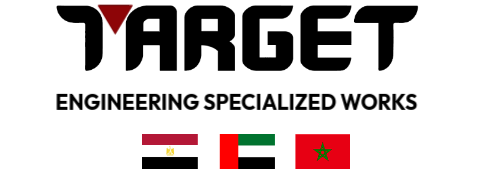

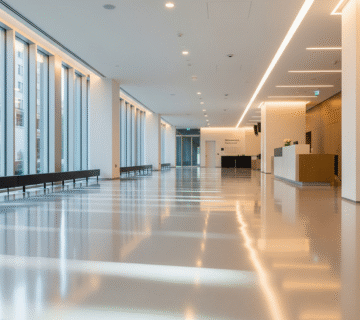
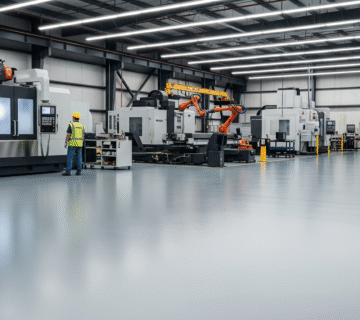
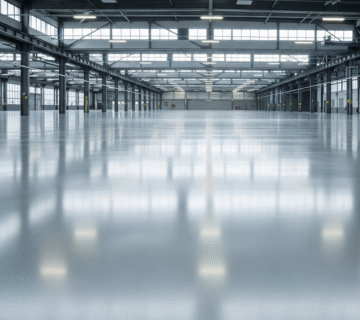
No comment